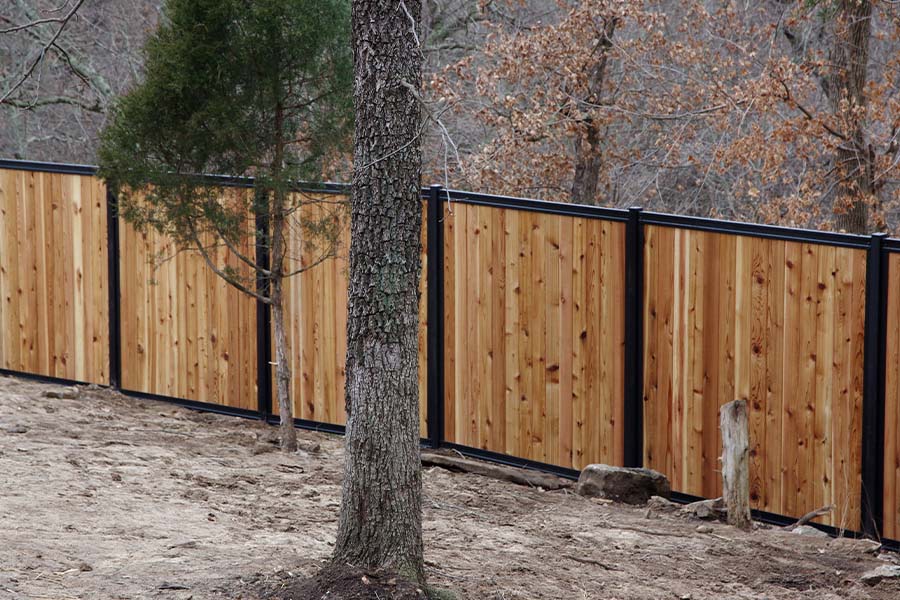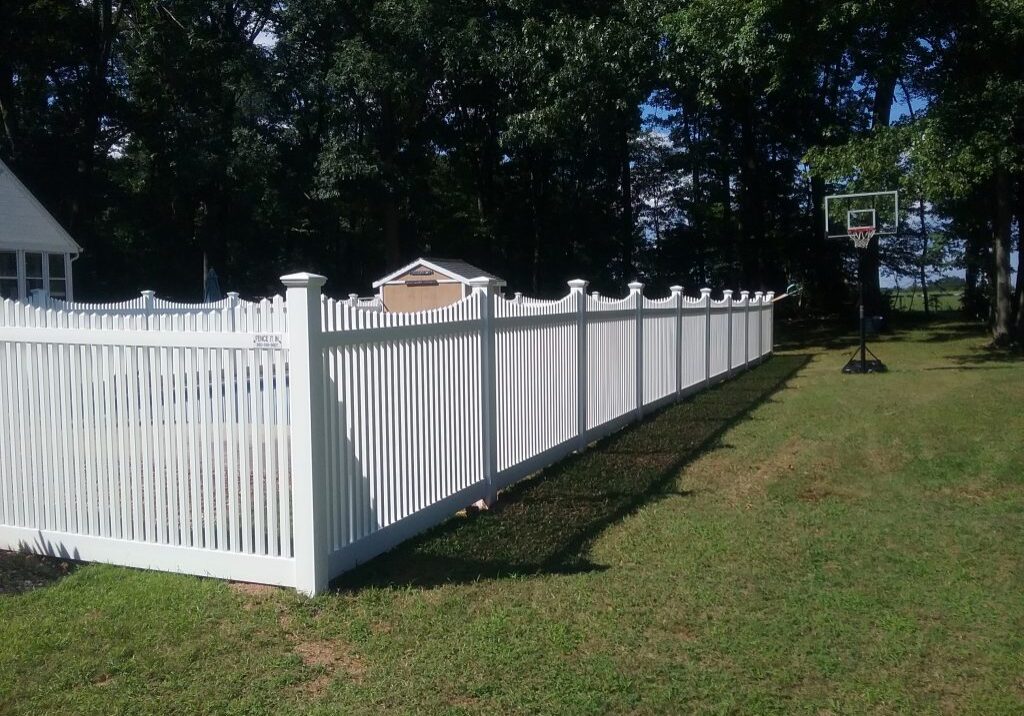All Categories
Featured
When it concerns preserving a wooden fencing, home owners typically face the choice of whether to paint or tarnish. Both choices have their benefits and drawbacks, and the choice ultimately depends on your visual preferences, the sort of wood, and exactly how much maintenance you want to dedicate to. Below's a detailed comparison to aid you make a notified decision.
The Fundamentals of Painting and Staining
Paint involves covering the wood with an opaque layer of color. It provides full protection, hiding the wood grain while supplying excellent protection against environmental aspects.
Discoloring penetrates the timber, boosting its all-natural beauty while including a protective layer. Depending on the type, discolorations can range from transparent to strong, enabling varying levels of timber grain visibility.
Advantages And Disadvantages of Painting
Pros:
Large Range of Color styles: Paint offers endless shade alternatives, permitting you to match your fence to your home's exterior or individual design.
Longer Long-term: Premium exterior paint can last approximately 5-7 years, requiring less frequent reapplication.
Superior Security: Repaint kinds a thick, strong barrier versus wetness, UV rays, and pests.
Cons:
Peeling and Cracking: With time, paint can peel or crack, particularly in areas with severe weather.
Hides Natural Timber Elegance: If you like the all-natural grain of wood, paint may not be the finest choice.
Greater Upkeep: Repainting needs scraping off the old paint, which can be labor-intensive.
![]()
Advantages And Disadvantages of Discoloration
Pros:
Natural Look: Spots protect and enhance the natural elegance of the timber, making it ideal for top quality timber like cedar or redwood.
Easier to Reapply: Unlike paint, spots do not break or peel off. Reapplying tarnish normally calls for less surface prep work.
Adaptable End Up Options: Stains can be found in clear, semi-transparent, and solid selections, offering various levels of coverage.
Disadvantages:
![]()
Much Shorter Life Expectancy: Discolorations, semi-transparent and specifically transparent ones, may need reapplication every 2-3 years.
Restricted Shade Alternatives: While spots offer all-natural tones, they lack the broad shade scheme offered with paint.
Much Less Safety: Spots pass through the wood but don't offer as thick a barrier as paint, making them somewhat much less safety against severe weather.
Factors to Think About
Visual Preferences: If you want lively colors and complete coverage, paint is the means to go. For a rustic and all-natural look, go with stain.
Timber Type: Top notch timbers with stunning grains gain from discoloration, while lower-grade woods can be painted for a polished appearance.
![]()
Climate: In damp or damp climates, paint's thicker obstacle may supply much better security. In modest or completely dry climates, stains can be enough.
Maintenance Dedication: Paint entails less constant reapplication yet even more initiative throughout touch-ups. Discoloration needs regular upkeep yet is much easier to manage.
Last Thoughts
Both painting and discoloration can properly shield and beautify your wooden fence. The very best alternative depends upon your concerns, whether they favor looks, resilience, or ease of maintenance. By recognizing the advantages and downsides of each, you can select the surface that straightens with your needs and guarantees your fencing continues to be a standout feature of your property for several years to find.
The Fundamentals of Painting and Staining
Paint involves covering the wood with an opaque layer of color. It provides full protection, hiding the wood grain while supplying excellent protection against environmental aspects.
Discoloring penetrates the timber, boosting its all-natural beauty while including a protective layer. Depending on the type, discolorations can range from transparent to strong, enabling varying levels of timber grain visibility.
Advantages And Disadvantages of Painting
Pros:
Large Range of Color styles: Paint offers endless shade alternatives, permitting you to match your fence to your home's exterior or individual design.
Longer Long-term: Premium exterior paint can last approximately 5-7 years, requiring less frequent reapplication.
Superior Security: Repaint kinds a thick, strong barrier versus wetness, UV rays, and pests.
Cons:
Peeling and Cracking: With time, paint can peel or crack, particularly in areas with severe weather.
Hides Natural Timber Elegance: If you like the all-natural grain of wood, paint may not be the finest choice.
Greater Upkeep: Repainting needs scraping off the old paint, which can be labor-intensive.

Advantages And Disadvantages of Discoloration
Pros:
Natural Look: Spots protect and enhance the natural elegance of the timber, making it ideal for top quality timber like cedar or redwood.
Easier to Reapply: Unlike paint, spots do not break or peel off. Reapplying tarnish normally calls for less surface prep work.
Adaptable End Up Options: Stains can be found in clear, semi-transparent, and solid selections, offering various levels of coverage.
Disadvantages:

Much Shorter Life Expectancy: Discolorations, semi-transparent and specifically transparent ones, may need reapplication every 2-3 years.
Restricted Shade Alternatives: While spots offer all-natural tones, they lack the broad shade scheme offered with paint.
Much Less Safety: Spots pass through the wood but don't offer as thick a barrier as paint, making them somewhat much less safety against severe weather.
Factors to Think About
Visual Preferences: If you want lively colors and complete coverage, paint is the means to go. For a rustic and all-natural look, go with stain.
Timber Type: Top notch timbers with stunning grains gain from discoloration, while lower-grade woods can be painted for a polished appearance.

Climate: In damp or damp climates, paint's thicker obstacle may supply much better security. In modest or completely dry climates, stains can be enough.
Maintenance Dedication: Paint entails less constant reapplication yet even more initiative throughout touch-ups. Discoloration needs regular upkeep yet is much easier to manage.
Last Thoughts
Both painting and discoloration can properly shield and beautify your wooden fence. The very best alternative depends upon your concerns, whether they favor looks, resilience, or ease of maintenance. By recognizing the advantages and downsides of each, you can select the surface that straightens with your needs and guarantees your fencing continues to be a standout feature of your property for several years to find.
Latest Posts
Grab Special Auto Repair Deals in Chicago at Montclare Auto Repair
Published Jun 01, 25
1 min read
Learn About Exceptional Car Repair Solutions at Montclare Auto Repair – Keep Your Car Running Smoothly
Published May 29, 25
1 min read
Find Brake Repair & More: Comprehensive Auto Care Solutions from Montclare Auto Repair
Published May 28, 25
1 min read
More
Latest Posts
Grab Special Auto Repair Deals in Chicago at Montclare Auto Repair
Published Jun 01, 25
1 min read
Learn About Exceptional Car Repair Solutions at Montclare Auto Repair – Keep Your Car Running Smoothly
Published May 29, 25
1 min read
Find Brake Repair & More: Comprehensive Auto Care Solutions from Montclare Auto Repair
Published May 28, 25
1 min read